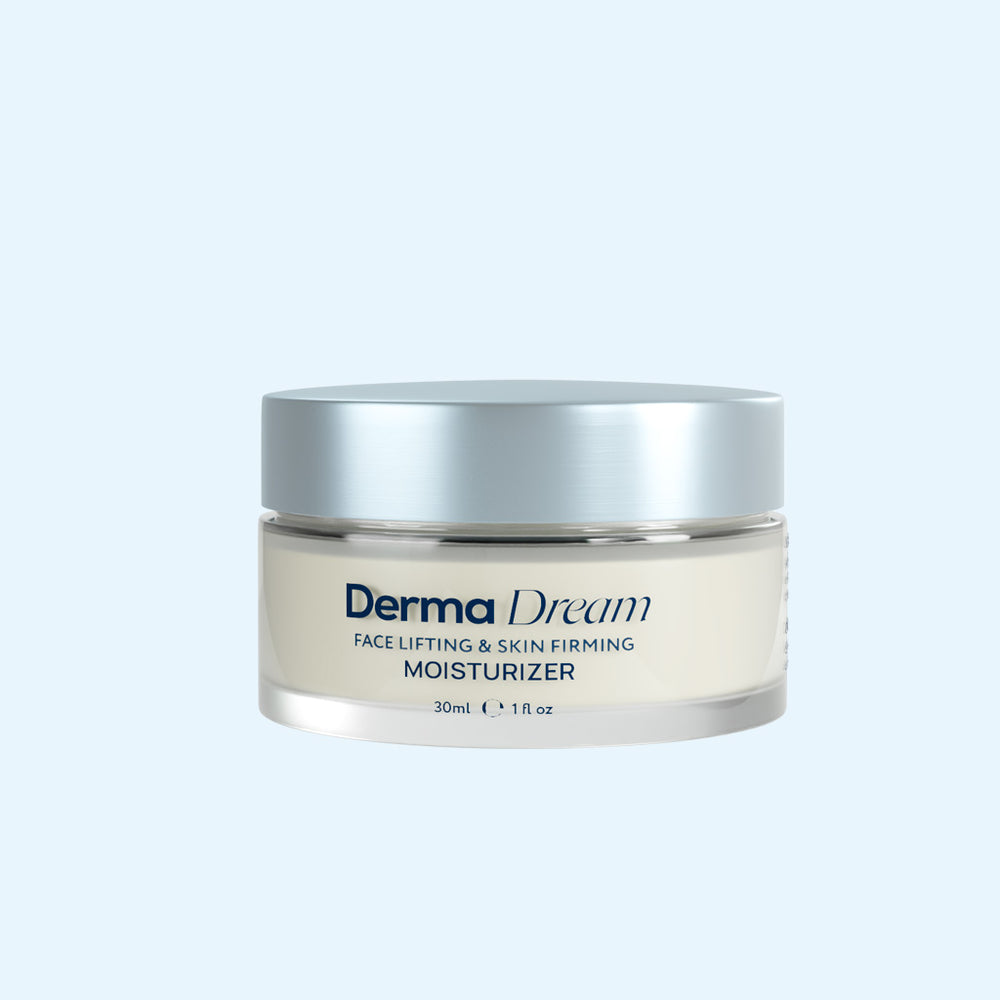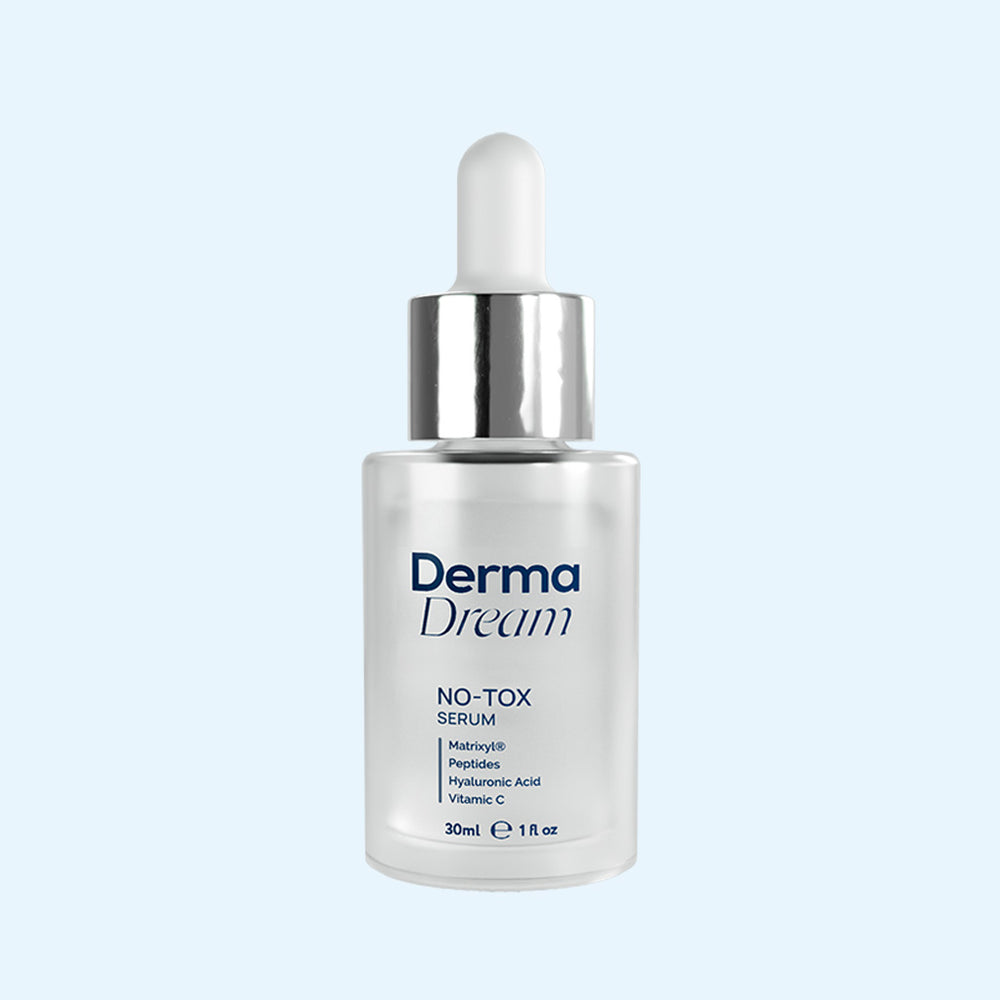
Jowls look adorable on basset hounds, but for humans, they can be a sign of getting older. Having slack skin around your jawline and developing wrinkles in this area can rip your confidence from you and have you contemplating all sorts of invasive measures to “tighten up” your sagging skin.
Let’s be real about skin. It ages, and it changes, and those changes include a loss of resilience and the replacement of smooth, taut skin with fine lines and wrinkles. But why does this happen in the first place? We’re diving in.
Why Does Skin Sag? Aging Skin 101
First off - aging is awesome — it represents wisdom, experience, and an appreciation for life that you simply don’t have in your youth.
But that doesn’t mean we love the toll it takes on our complexions.
Let’s talk about what happens to the skin as we age, and why our complexions might end up looking so much less radiant.
Facial Muscles Are Weakening
Just like the muscles in your body need a good workout, the muscles of the face need one, too. Facial muscles help build the structure of your face, and give it support, but with age, these muscles begin to shrink.
Shrinking muscles leave the skin unsupported, which can cause it to hang and sag.
Skin Proteins Are Declining
Collagen and elastin are two proteins in your skin that keep it plump, firm, and youthful, but as you get older, the production of those proteins begins to decline. Without enough collagen and elastin, the skin begins to crease, wrinkle, and furrow. Fine lines and wrinkles begin to form and, unless addressed, worsen the older we get.
That Golden Tan Comes at a Cost
As we all know, experts say that tanning can add years to your looks. This is because the sun’s rays cause oxidative stress.
When your skin is exposed to the sun (and other harmful aggressors like pollution or even cigarette smoke), it releases free radicals — which wreak havoc on your skin cells and damage them.
Antioxidants can help support your skin cell health during exposure to the sun (along with sunscreen), but if you’ve spent years achieving the perfect Malibu tan every year, your skin will likely show it in the form of uneven texture, tone, and, of course, sagging.
New Skin Isn’t Being Made as Quickly
Skin cell turnover is the process by which new skin cells are made. As you get older, the process takes longer, sometimes as long as 50-60 days. The new skin is healthy, youthful skin, and when it isn’t being made as quickly, your skin will begin to look dull and dry, and lose some of its resilience.
There’s a lot going on to cause those wrinkles around your jawline, and it can be frustrating to deal with them. So, what can you do about it?
Conventional Solutions for Jawline & Jowls (and Why Not To Choose Them)
There are also some old, traditional solutions— but we’ll warn you: Some of these methods carry massive risks, major costs, and significant recovery time.
Neck Lift
A neck lift procedure is a facial surgery that removes excess skin and fat around the jawline and neck. Incisions are typically made around your hairline, and the skin is stretched, snipped, and surgically lifted.
This type of procedure is invasive, expensive, and takes weeks of time for recovery. On top of it all, it isn’t even a permanent solution. Eventually, as your skin continues to age, you’ll need to have the procedure performed again, or follow up with fillers and injectables.
Injectables
Injectables are compounds that are inserted into the face through a needle. They can include chemicals that paralyze certain facial muscles (to prevent expression lines) or fillers that are injected to lift and plump the skin.
These are usually given in an office or medical spa setting. They can be painful, pricey, and may even result in facial distortion. Not to mention, you’ll need to set up a recurring appointment to have them redone every three months.
Threads
Threading uses medical grade string called “threads” to pull and tighten the skin of the jawline & jowls. In an office (without anesthesia), a provider will insert a cannula into your skin that allows them to insert the thread. The thread is then attached to the fascia at the lower part of the jowl and pulled towards the ear, where it is tied off.
This is notably painful, and there are hundreds of horror stories about threads that snap, leaving one side of the face slack while the other remains tight.
These options may be common, but they’re also painful, pricey, and invasive — all of which microcurrent isn’t.
What Is Microcurrent? And how could it help restore vibrancy & lift facial features?
Just when you thought you’d have to take out a second mortgage on your home and hide out in a hotel room for a month while you recover from facial surgery, you’ve met microcurrent.
Microcurrent is a method of delivering low-level electrical currents that mimic your body’s natural currents to your skin and facial muscles. By delivering these currents to the deepest layers of your skin and muscles, microcurrent can target these areas and help stimulate, support, and balance your skin.
Microcurrent supports your skin’s ability to function like it did when it was younger — which means your skin can also look more like it did when it was younger.
How It Works:
These low-level currents are painlessly delivered to your skin and muscles — and it might seem like magic, but it’s really simple science:
- Facial muscles get stimulation in the form of a “workout” that helps tone them, helping them remain firm.
- Blood flow is supported. Healthy blood flow to the skin means a healthy supply of oxygen, which keeps your skin healthy.
- Your skincare products work better. Using microcurrent helps your favorite skincare products get past your skin barrier, allowing them to penetrate the skin so they can effectively do their jobs.
Over time, the look of fine lines and wrinkles fades, jawline tightens jowls become less noticeable, and skin looks visibly lifted, sculpted, and youthful.
So how do you get this miracle current?
You can get microcurrent treatment at a pricey med-spa (which can cost up to $300 per session!)
But here at My Derma DReam try our MicroSculpt Microcurrent System allowing you to get it in the comfort of your very own home.
The MicroSculpt System
The MicroSculpt™ is an at-home microcurrent device that allows you to get the benefits of microcurrent from home. Imagine would it would be like if you could TRAIN, TONE, and SCULPT your skin without any needles, injections, or unnecessary appointments.
Just five minutes per day can deliver results that compound every single time you use the MicroSculpt tool. It’s simple, effective, and costs a fraction of the price of invasive procedures. It even comes with an extended warranty and around-the-clock customer service so you can get your questions answered anytime you need it.
Tighter, Brighter Skin With MicroSculpt
Don’t let droopy skin get you down. MicroSculpt gives you the ability to wave goodbye to Big Beauty and take care of your skin gently and effectively with natural solutions that help support healthy skin, not damage it.
All you need to get started is your MicroSculpt tool and your favorite Activator Serum. So go ahead, tighten that jawline & those jowls non-surgically. We won’t tell your secret.
Sources:
[Muscular aging and its involvement in facial aging: the Face Recurve concept] | PubMed
How dermatologists treat sun-damaged skin | AAD.org
SEER Training: Layers of the Skin | Cancer.gov
Neck Lift Procedure Steps | American Society of Plastic Surgeons



